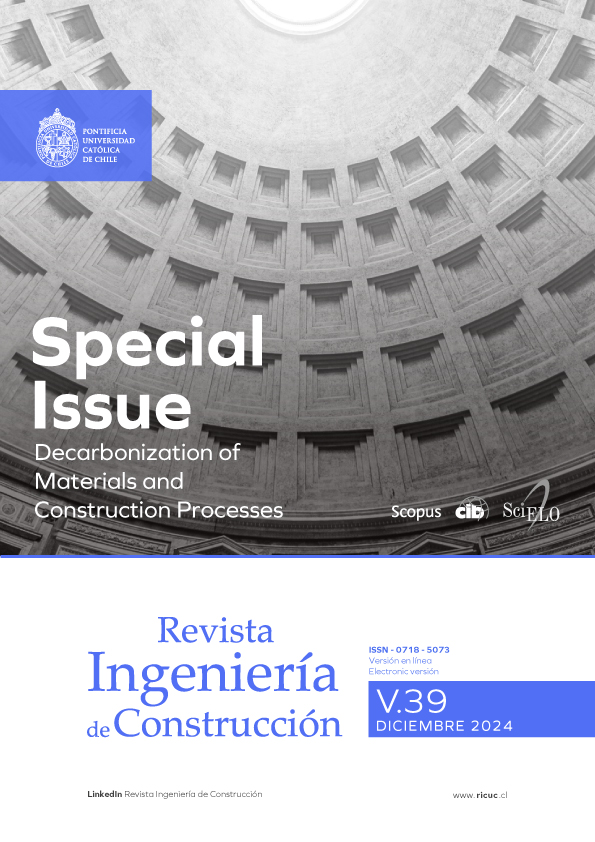Advancements in low carbon emission cements for 3D printing
a state-of-the-art review
DOI:
https://doi.org/10.7764/RIC.00131.21Keywords:
Calcium sulfoaluminate cement, limestone calcined clay, geopolymers, printabilityAbstract
Concrete production, heavily reliant on Ordinary Portland Cement (OPC), is a significant contributor to global CO2 emissions, responsible for about 8% of human-related emissions. While past efforts to reduce the carbon footprint of cement focused on improving energy efficiency and incorporating supplementary cementitious materials (SCMs), recent innovations have shifted towards low-carbon binders like calcium sulfoaluminate (CSA) cement, limestone calcined clay (LC3) cement, and geopolymers. These alternatives offer considerable reductions in CO2 emissions during production. However, the adoption of these materials faces challenges, particularly in 3D-printed concrete (3DPC), an emerging construction method that demands specific rheological and mechanical properties. Research into these low-carbon binders shows that CSA cement provides rapid strength development, LC3 mixtures offer promising environmental benefits and structural integrity, and geopolymers achieve high compressive strength but require optimization for durability. This study summarizes a review of the effects of these binders on the fresh properties, mechanical performance, and durability of concrete, emphasizing their potential for use in 3DPC. The findings underscore the importance of optimizing material properties for enhanced performance and sustainability in the construction industry.


